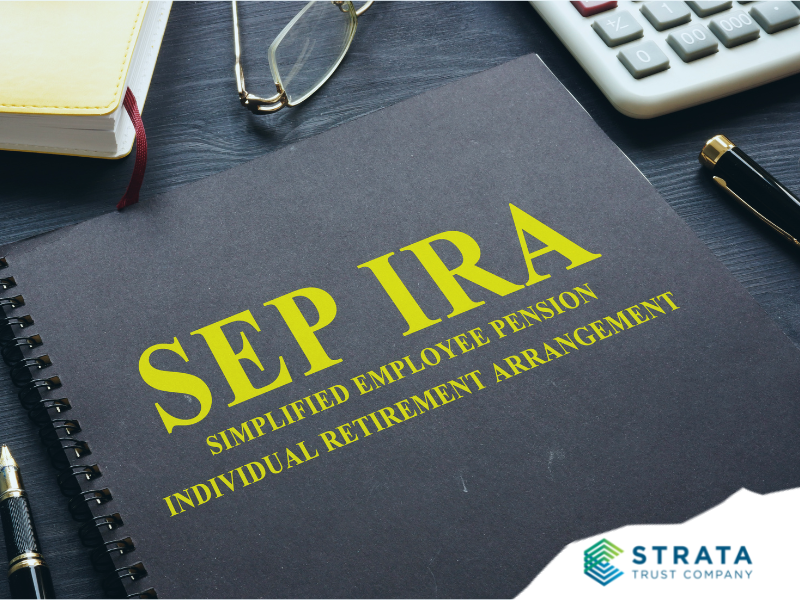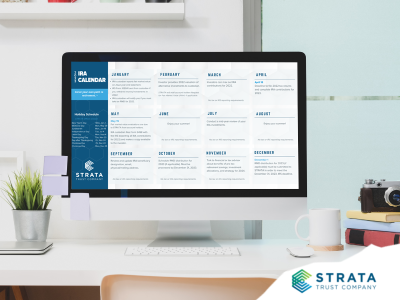If you own a business and receive income for personal services rendered, you can establish a simple, cost-effective IRA-based retirement plan called a Simplified Employee Pension (SEP). A SEP can enable you to save just as much for retirement as you would be able to save through a more costly and complex 401(k) plan.
It’s not too late to start a SEP plan for tax year 2022 and take a tax deduction. You have until your business’s tax-filing deadline, plus extensions, to establish and fund a SEP plan for a tax year. This means that October 17, 2023, is the deadline to establish and fund a SEP plan for 2022 for sole proprietors, LLCs, and incorporated businesses filing on a calendar-year basis.
Overview
A SEP plan allows you to deduct your plan contributions and put your savings to work by earning tax-deferred investment gains in your self-directed IRA. Generally, you may contribute up to the lesser of 25% of your business income or $61,000 for 2022. (The dollar limit increases to $66,000 for 2023.) You are never required to contribute, and you can contribute any amount (up to the limit) when you do choose to contribute. If you make a contribution and you have employees, however, you must make contributions for all employees who meet the eligibility requirements you chose when you established (or last updated) your plan.
Establishing a SEP Plan
To establish a SEP plan, you must complete a (very short) plan document that states the rules of the plan. Most SEP plans are established using IRS model document Form 5305-SEP. You can find this form on the IRS website, or you can access STRATA’s fillable model SEP plan document here.
If you use a model document, you must operate your SEP plan on a calendar-year basis, and you cannot maintain another qualified plan, have leased employees, or be a member of a controlled group where some members do not want to participate in the SEP.
A model document gives you options to select eligibility requirements that your employees must meet to receive SEP plan contributions. These include an age requirement (not to exceed 21) and a service requirement of working for you in up to three of the last five years. You may also choose to exclude union employees, nonresident alien employees who do not receive U.S. wages, and employees who earn less than $650 for the year. (This amount increases to $750 for 2023.).
If you have employees, you must notify them about the SEP plan once it is established, generally by providing them with a copy of the model plan document you completed.
 Calculating Your Contributions
Calculating Your Contributions
The SEP plan contribution limit for 2022 is the lesser or $61,000 or 25% of your net income or wages. For a business owner receiving W-2 wages, the calculation is simply the chosen contribution percentage (between 1-25% of income) multiplied by the wages for the year. Any compensation over $305,000 cannot be considered for 2022 calculations. (This amount increases to $330,000 for 2023.)
For business owners who do not collect W-2 wages, the calculation is more complex. Your contribution is calculated using your net earnings from self-employment, which takes into account the deduction for a portion of your self-employment tax and for your SEP plan contribution. This means that the deduction for your SEP plan contribution and your net earnings depend on each other. You can find a worksheet in IRS Publication 560, Retirement Plans for Small Businesses to calculate your contribution or work with a tax or financial professional.
Employee Contributions
If your business has employees and you choose to make a SEP plan contribution for the year, you must contribute for all employees who meet your plan’s eligibility requirements. If you used the model Form 5305-SEP, you and each eligible employee must receive a contribution that is the same percentage of compensation. For example, if you make a 10% contribution for yourself, you must make a contribution for each of your eligible employees equal to 10% of the employee’s compensation. These contributions are tax-deductible expenses for the business. You also must notify your employees within 30 days after making a SEP contribution.
 Depositing Contributions
Depositing Contributions
To make a SEP contribution, simply deposit dollars in your Traditional IRA and inform your IRA custodian that it is a SEP plan contribution. If you have employees, they will also need to have Traditional IRAs to receive their SEP plan contributions.
 After the Contribution
After the Contribution
Once the cash is in the IRA, the IRA owner can invest, transfer, and distribute it at any time, following the Traditional IRA rules. You may also still make individual contributions to your Traditional and Roth IRAs in the same year as you make a SEP plan contribution – the contribution limits are separate. Just be aware that participating in a SEP plan may affect you or your spouse’s eligibility to take a tax deduction for a Traditional IRA contribution, depending on your level of income.
Watch for the New SEP Roth IRA Option
The law changed, beginning in 2023, to allow individuals to elect to treat SEP plan contributions as after-tax Roth IRA contributions. This may allow some individuals access to Roth IRAs when they would otherwise not be eligible to contribute to a Roth IRA because of their high income. SEP plan documents do not currently allow for Roth contributions, and Roth IRA documents do not currently allow for SEP plan contributions, so this new option may not actually be available until the IRS issues additional guidance.
Next Steps
If you are interested in opening a SEP IRA account with STRATA or have questions about SEP plans, our self-directed IRA experts are here to help – contact us today.
As a directed IRA custodian, STRATA does not provide investment advice. IRA custodians do not provide investment, tax, or legal advice; clients needing these services are urged to contact their professional advisor.









